When performing acoustic testing, choosing a proper sound level meter (SLM) testing system is the key. An SLM is commonly used in noise pollution studies for quantification of different kinds of noise, especially industrial, environmental and aircraft. However, reading from an SLM does not correlate well with human-perceived loudness, which is better measured by a loudness meter.
Types of SLMs
Integrating meter. An integrating meter is one that can measure an equivalent continuous sound level (Leq) and is required for any proper occupational or environmental noise monitoring. This meter is usually mandated.
[restrict …]Non-integrating meter. A non-integrating meter displays only the instantaneous noise level at any one time and is suitable only for spot checks and very steady noise levels.
As per IEC standards, SLMs of the two classes, Class 1 and Class 2, have the same functionality but different tolerances for errors. Class 1 instruments have a wider frequency range and a tighter tolerance than lower-cost, Class 2 units.
ANSI specifies SLM as three different types, namely, 0, 1 and 2. Type 0 is used in laboratories, type 1 for precision measurements in the field and type 2 for general-purpose measurements. Type 1 meter is preferred for designing cost-effective noise controls.
Frequency weighting
Frequency weighting selections allow users to choose how the meter will treat sound measurements over its specified frequency range. Certified SLMs offer noise measurements with A, C and Z frequency weighting.
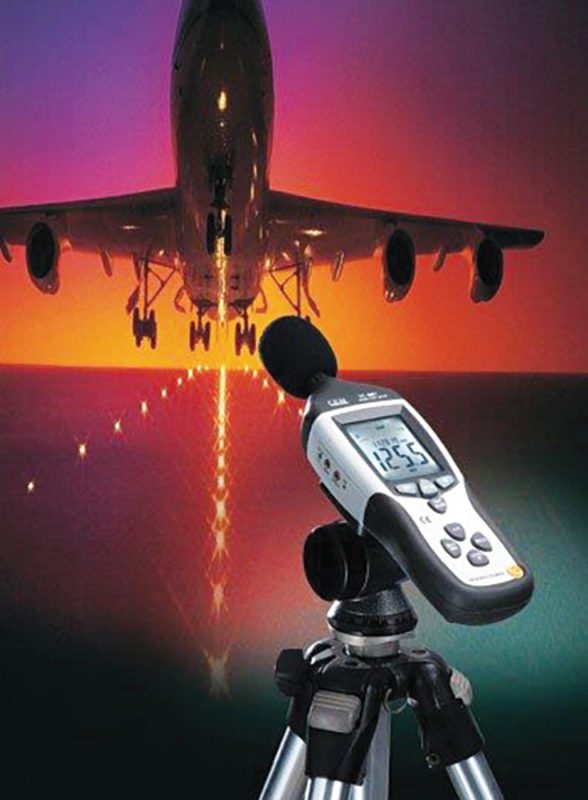
A human ear responds more to frequencies between 500Hz and 8kHz and is less sensitive to very-low-pitch or high-pitch noises. In A weighting (expressed as dBA), the meter gives more weight to certain frequencies. In other words, sound levels at certain frequencies are boosted or cut (to match how the human ear responds to sound).
In C weighting (expressed as dBC), all frequencies are treated the same (no boosting or cutting of sound level).
Z weighting (expressed as dBZ) is a flat frequency response of 10Hz to 20kHz ±1.5dB.
Frequency weighting A is the only weighting that is mandated by the international standard; frequency weightings C and Z are optional fitments.
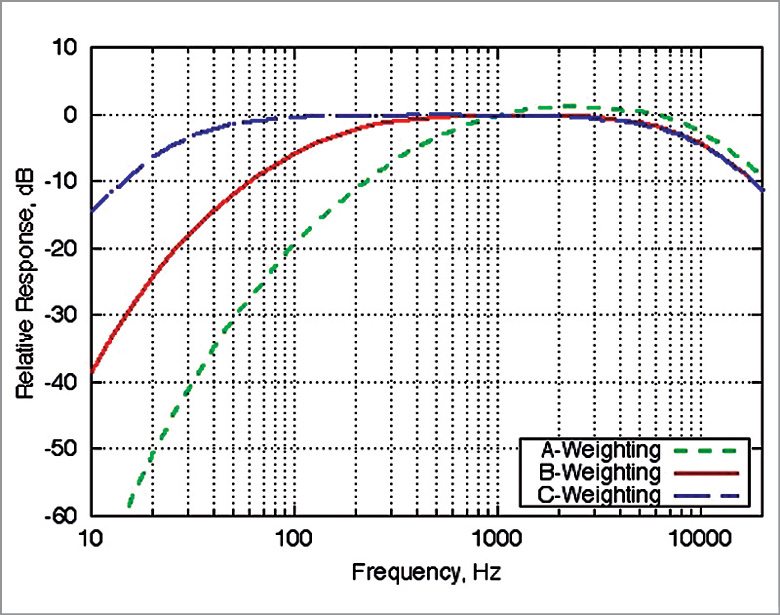
Why frequency is important
Consider the following example. A whistle blows at about 45dB, while a thunder is at 100dB. But, a thunder has frequency of only 50Hz, whereas the whistle has a frequency of 1000Hz or more. Decibel level is not enough to understand the quality of sound; frequency is equally important. Hence, an SLM that has better response over a large frequency range is considered more accurate.
Leq (equivalent continuous sound level). In industries, noise-measurement time-averaged value (in decibels) is used instead of sound exposure level. Leq is the average sound pressure over a period of time. Unlike numeric values, decibel values cannot be averaged directly because these are logarithmic values. Hence, these cannot be added or subtracted directly.
SLMs automatically calculate Leq during and after the measurement has finished. These sample the noise level 16 times per second and then convert dB readings back into sound pressure levels, add these up, divide by the number of samples and return Leq back in dB form. SLMs that integrate such logarithmic values by taking samples at frequent intervals over a period of time are integrating SLMs.
Time weighting (fast/slow response time). Sound level measurements using any grade of SLM can be fast (125 milliseconds time constant) and slow (one second time constant). These weightings date back to the time when SLMs had analogue meters and defined the speed at which the meters moved. As these time constants were set in standards, these have continued in digital meters, now being calculated or simulated before being displayed, stored or used to calculate other acoustic parameters that need time weighting.
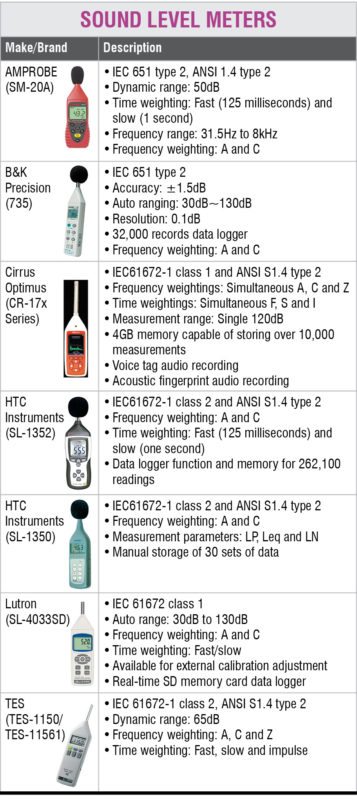
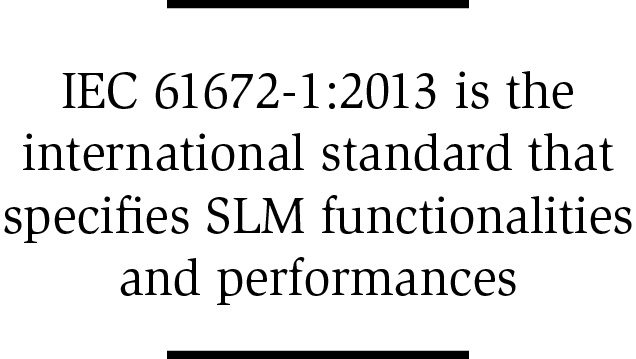 Following terms are used to express sound level, clearly indicating time weighting as well as frequency weighting: LAS (slow, A weighted sound level), LAF (fast, A weighted sound level), LCS (slow, C weighted sound level) and LCF (fast, C weighted sound level).
Following terms are used to express sound level, clearly indicating time weighting as well as frequency weighting: LAS (slow, A weighted sound level), LAF (fast, A weighted sound level), LCS (slow, C weighted sound level) and LCF (fast, C weighted sound level).
Slow response is most often used for listening to conservations/OSHA programmes and is an averaging of sound level over time.
Fast response is most commonly used for product noise-reduction efforts and can detect quick noise bursts such as fireworks.
Sound level data logger. Tango and EXTECH HD600 data-logging SLMs measure, display and store sound-level measurement data. Up to 20,000 readings can be stored in the meter, each with date and time stamp. Readings can be recalled on the meter’s display or can be downloaded to a PC.
Included software permits users to view, graph, print and export data to a spreadsheet. This capability can be applied to many applications such as airport-noise analysis, construction-zone monitoring, traffic intersections, concert venues, environmental impact studies and others.
Noise dosimeter. These are ideal for industries where shifts are involved, such as construction (building sites), entertainment (orchestras) and emergency services (police forces). Rather than having a health and safety officer follow or stay with workers throughout assessment, each employee can be left to his or her own device, while the noise dosimeter takes accurate and detailed measurements throughout the day. This type of device is particularly useful for measuring daily noise exposure of workers who move about a lot during their shifts and for those who work at night.
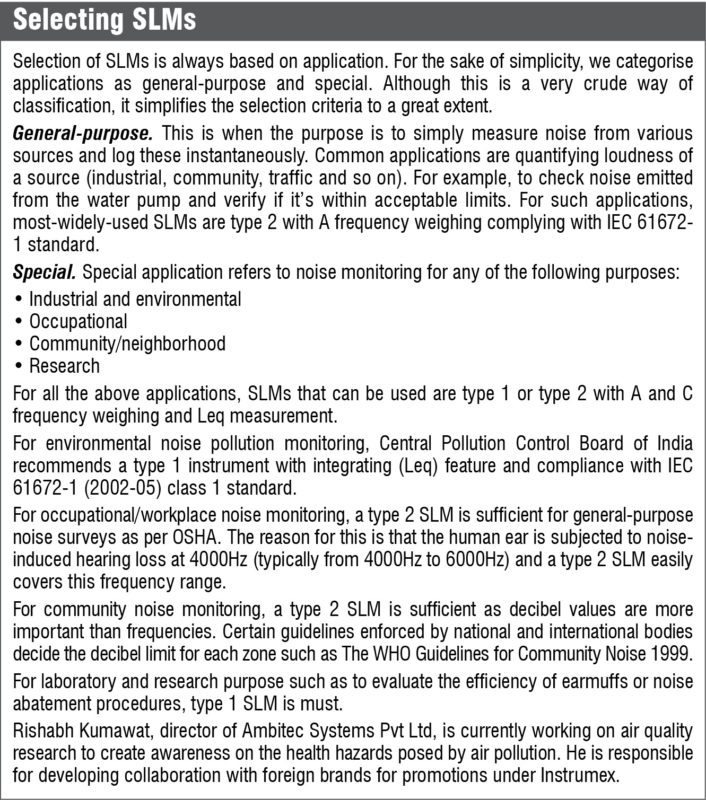
“Our SLM is built on internal standard 94dB/1kHz square-wave generator for calibrating certain internal amplifier circuits. An electric condenser microphone is used for high accuracy and long-term stability,” says Vijay Nagori, CEO of Instruments & Machinery Sales Corp.
Optimus, the latest generation of SLMs, combines the latest digital technology with ease of use, guarantees high performance with class 1 and class 2 SLMs, measures everything you need simultaneously to save time, is designed for basic, occupational and environmental noise measurements, meets standards from around the world (including the UK, EU, OSHA, MSHA and ACGIH), type approved from PTB, LNE & Applus+ to IEC 61672-1:2002, is easy to upgrade at any time and carries a 15-year warranty.
SLMs applications
Accurate SLMs are expensive and not accessible to average people. On the other hand, smartphones that are widely available allow for various downloadable applications. Many of these apps allow smartphones to be used as an SLM and provide a cost-effective solution to help determine noise levels in different environments.
Based on this availability, questions that are asked frequently are:
1. Can a smartphone SLM app be used as an informative substitute for measuring sound levels?
2. If such uses occur, will the accuracy be acceptable to substitute for measurements made with a dedicated and calibrated SLM?
The answer to the first question is yes and to the second question the answer should be, “Let us not get carried away at this time.” An analogy might be: Can a pickup do the same job as a semi-tractor? To a limited extent, yes, in that it can haul products, but will have its limitations.
Smartphone SLM apps were selected based on their ability to measure occupationally relevancy criterion, as given below:
1. Ability to report un-weighted (C/Z/flat) or A weighted sound levels
2. Slow and fast response
3. Equivalent continuous sound level (Leq) or time-weighted average (TWA)
Kardous and Shaw acquired representative samples of popular smartphone apps. Of the 130 for iOS, ten [Adv Decibel Meter, Decibel Meter Pro, iSPL Pro, Noise Meter, NoiSee, Sound Level Meter, SoundMeter, (Real) SPL Meter, SPL Pro and SPLnFFT] met the selection criteria.
A total of 62 Android apps were examined, and only four (SPL Meter, deciBel Pro (dBA), dB Sound Meter and Noise Meter) partially met the selection criteria and were subjected to additional testing.

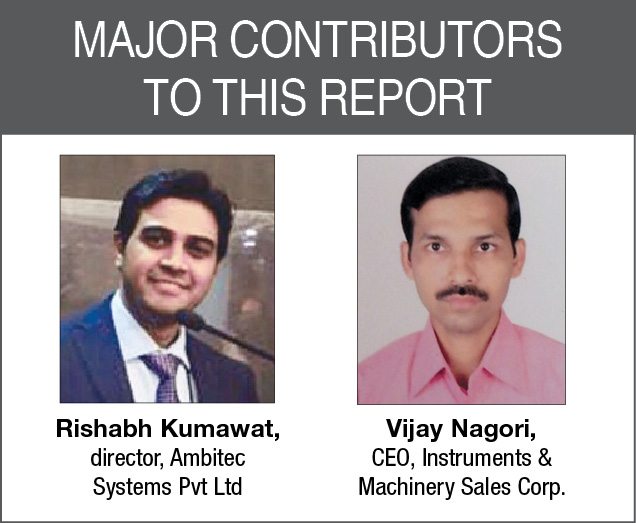
Overall, Android based apps lacked the features and functionalities found in iOS apps. This is likely due to the development ecosystem of Android marketplace and users’ expectations for free or low-priced apps, and the fact that Android devices are built by several different manufacturers.
The future
SLMs are an attempt to reciprocate sound as it is heard by the human ear. It is the perfect instrument that uses a transducer (microphone) to generate electrical signals, which are processed by the electronic circuitry to display the most accurate representation of sound waves.
But with external factors like temperature, humidity and dust, the microphone starts losing its sensitivity. Onboard electronics also have shelf lives of their own.
As long as the device is away from the human ear, decibel level shown on it will still not be the exact representation of sound that hits the ear drum.
MIRE. To overcome this, the concept of microphone in real ear (MIRE) is evolving. As the name suggests, the microphone is placed inside the ear. This is possibly the closest that we can get at present in simulating the sound as heard by the human ear.
Development of such a minute microphone that also has precision in measurement is currently underway. Application of this is for advanced research in developing more effective ear muffs and studying noise-induced hearing loss more closely.
Smartphones. With the growing development of smartphones, general-purpose applications are easily served by some Android and iOS apps that make use of the microphone of the smartphone as input to take various types of measurements.
Studies have been carried out to evaluate the performance of smartphones as SLMs, but it is still not clear if smartphones can replace basic type 2 SLMs.
In future, better-quality smartphones may replicate measurements taken by type 2 SLMs, but periodic calibration of microphones will be a big question.
Biswajit Das is manager-R&D, EFY Labs[/restrict]





